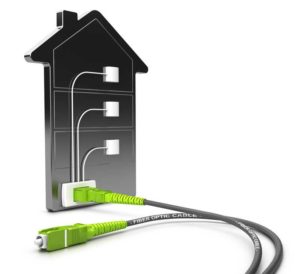What is a passive optical network?
Passive Optical Networks
______________________________________________________________
The world is connected by broadband networks in a way that was unimaginable a few decades ago. Almost every aspect of our lives has been changed by broadband and it’s a service which is keen to evolve. Speed, of course, is one of the most critical elements that providers and consumers are keen to see increase. Likewise, maintaining and improving the efficiency of broadband connections is crucial. Taking these factors into account Passive Optical Networks (PON) satisfy these needs with ease.
What are PON?
There has been a significant shift in focus and development towards fibre optic technology in the last 10 years. And it’s fibre optic technology which is driving PON forwards. A PON uses a single optical fibre to transmit data, but it does this in a highly innovative way. Using fibre optic splitters, a PON is able to divide the fibre bandwidth and, therefore, use multiple wavelengths for different uses. So, for example, one wavelength can be utilised for handling upstream traffic such as sending an email, whilst another wavelength can simultaneously be downloading a file.
What is the Difference between PON and GPON?
When you’re discussing PON it’s common for the acronym GPON to enter the conversation, but what is GPON? And how does it differ to PON? Well, GPON stands for Gigabit Passive Optical Network. And it’s considered the fastest form of PON available. Capable of delivering full fibre connectivity direct from ISPs to consumers, GPON allows multiple customers to be served by a single fibre connection. And this single fibre connection, with multiple wavelengths, is why you are able to receive hundreds of different TV channels down one connection.
What are the Main Advantages of Passive Optical Networks?
Working with a PON brings a number of attractive benefits to the consumer such as:
- Increased Speeds: PON is able to effortlessly satisfy broadband customers’ need for speed. As a result, customers can expect PON to deliver consistent speeds of 1 Gbps. And, where GPON services are in place, speeds can reach 2 Gbps, providing an unparalleled broadband experience.
- Range of Services: Broadband customers are always looking for services which provide choice. And PON is the perfect platform for opening up a wide range of services to consumers. Thanks to the multiple wavelengths that PON uses, numerous services can all be offered through the same connection.
- Scalable: It’s essential for IT networks to be flexible, particularly in the business sector. Thankfully, the design of PON means that this need can easily be satisfied. With a single fibre capable of being split into 32 individual connections, PON offers you the chance to expand your network with the minimum hassle.
- Cost Effective: A PON can split a single optical fibre to connect multiple customers, a move which translates into cost savings. As the PON design avoids the costs of exclusive fibre to ISP connections, fewer materials and maintenance costs are in place. And these cost savings are passed onto the customers in the form of lower tariffs.
- Reliable: The frustration of a dropped broadband connection is something that we can all relate to. Luckily, PON minimises the risk of connection problems associated with traditional broadband connections. As fibre optic cables don’t require electricity there are no issues presented by electrical interference or static. This ensures that PON connections are more reliable and allow users to remain productive.
Having the right cabling solutions, and leveraging the most up to date technologies is an essential part of modern online businesses. For information and advice on how we can help you make the most of your cabling, don’t hesitate to get in touch and speak to our expert engineers.
For additional electrical articles please visit our main BLOG page here





